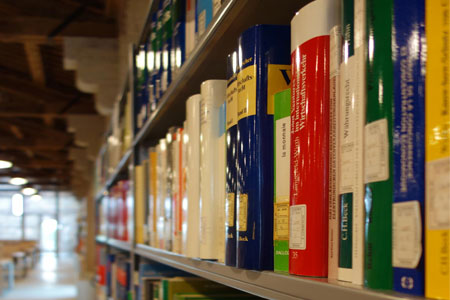Course not running

- Course code
- 4S02464
-
Name of lecturer
-
Alessandro Bucciol
- Coordinator
-
Alessandro Bucciol
- Number of ECTS credits allocated
-
9
- Academic sector
-
SECS-P/05 - ECONOMETRICS
- Language of instruction
- English
- Location
- VERONA
- Period
-
primo semestre dal Sep 24, 2012 al Dec 21, 2012.
Lesson timetable
Learning outcomes
The course provides an overview of the main econometric tools, with particular emphasis on economic applications, developed interactively in class using the professional statistical software Stata™.
The program is divided in four parts. The first part shows the standard econometric method (ordinary least squares regression, OLS), its properties, and statistical tests. The second part discusses the main limitations of OLS: wrong specification of the functional form, heteroskedasticity and autocorrelation. The third part introduces the problem of endogeneity and the instrumental variables (IV) estimators. The final part presents more advanced models suited for binary dependent variables or panel data.
Syllabus
1) Introduction
1.1) Econometrics; cross-section, time series and panel data
1.2) Stata tutorial
2) Ordinary Least Squares (OLS) estimator
2.1) Introduction
Univariate and multivariate regression; marginal effects and elasticity
2.2) Goodness of fit
R2, adjusted R2, AIC and BIC criteria; forecast; outliers
2.3) Properties
Gauss-Markov assumptions; unbiasedness; efficiency; consistency; asymptotic normality
2.4) Hypothesis testing
t-test on one restriction; F test on several restrictions
3) OLS diagnostics
3.1) Specification and functional form
Collinearity; superfluous and omitted variables; RESET test of specification; Chow test of structural stability
3.2) Heteroskedasticity of the errors
White test and Breusch-Pagan test; White robust standard errors
3.3) Autocorrelation of the errors
Durbin-Watson test and Breusch-Godfrey test; Newey-West robust standard errors
4) Instrumental variables (IV) estimator
4.1) Endogeneity
Autocorrelation and lagged dependent variable; measurement error; omitted variables; simultaneity
4.2) Simple instrumental variables (SIV) and generalized instrumental variables (GIV)
Assumptions; properties of the IV estimator; two-stage derivation (2SLS)
4.3) Instrument properties
Relevance test; weak instruments; Sargan validity test; Hausman exogeneity test
5) More advanced models
5.1) Models for binary dependent variable
Linear probability model (LPM), probit and logit models; marginal effects; goodness of fit; maximum likelihood estimate
5.2) Models for panel data
Pooled effects, fixed effect and random effects; goodness of fit; comparison tests; dynamic models; pseudo-panels
Assessment methods and criteria
The exam is written, and it includes both theoretical, numerical and applied exercises on the topics covered in class.
During the course it is possible to submit up to two voluntary homeworks on specific parts of the program. These homeworks will contribute to the final grade.







